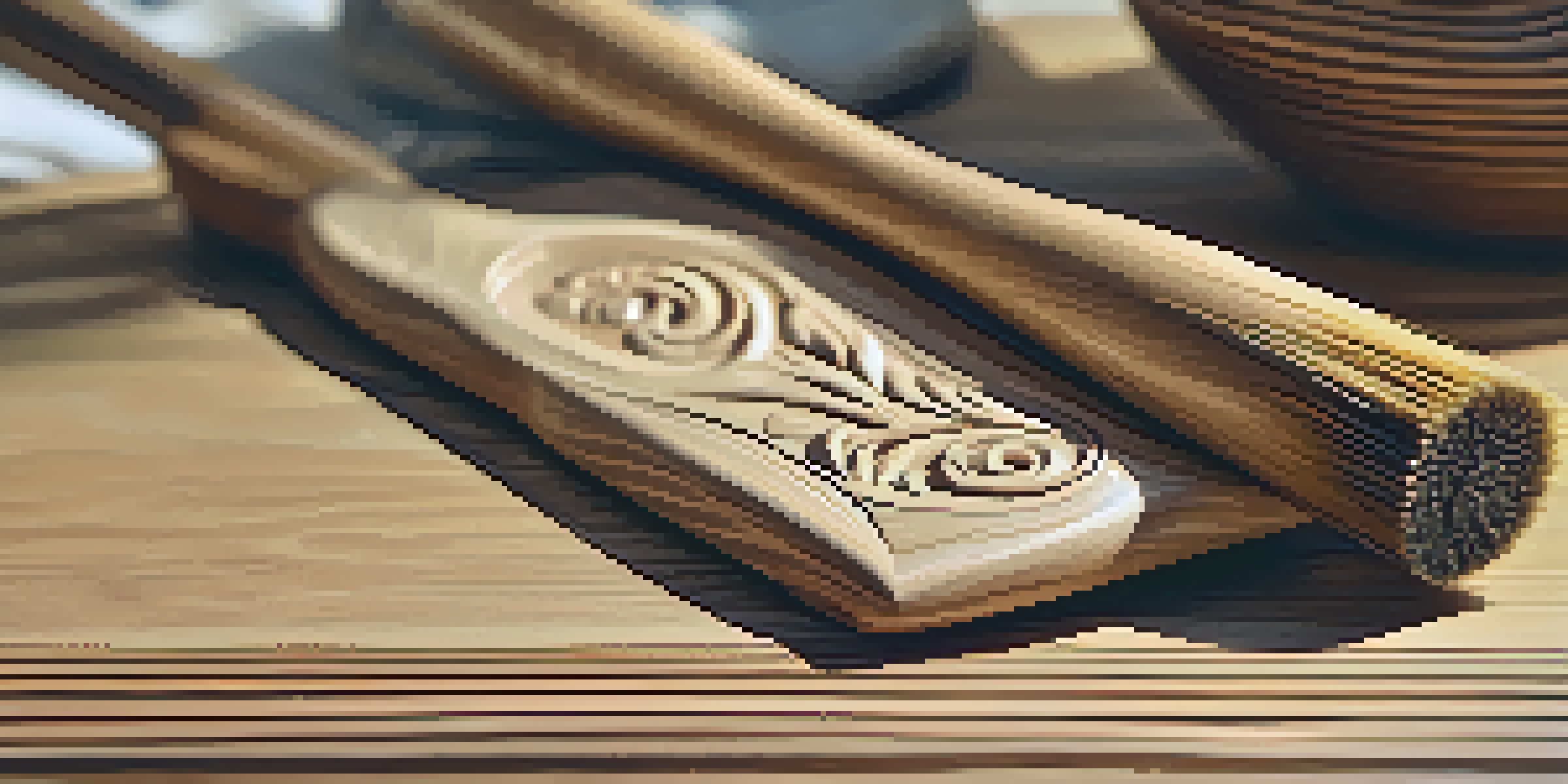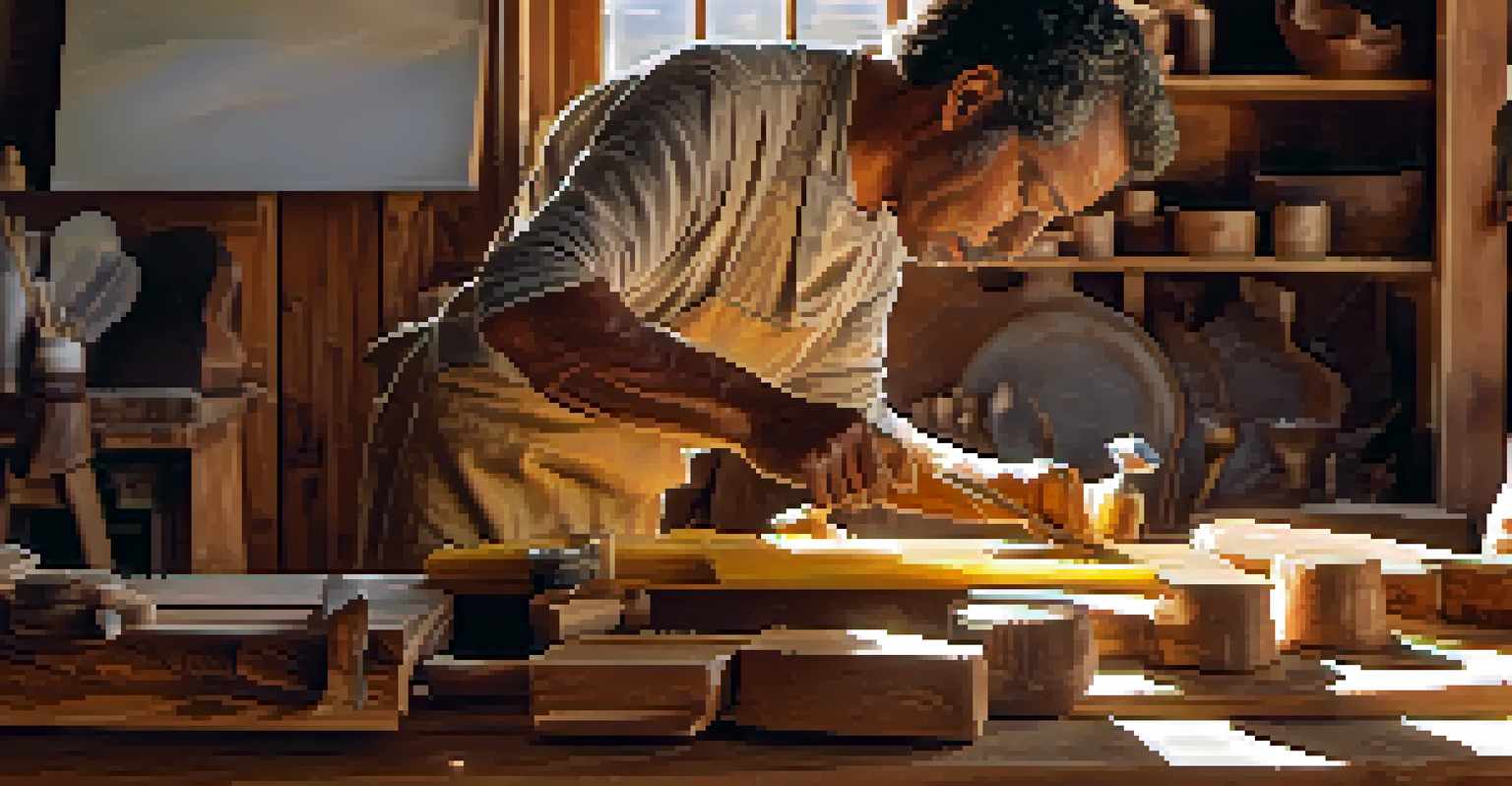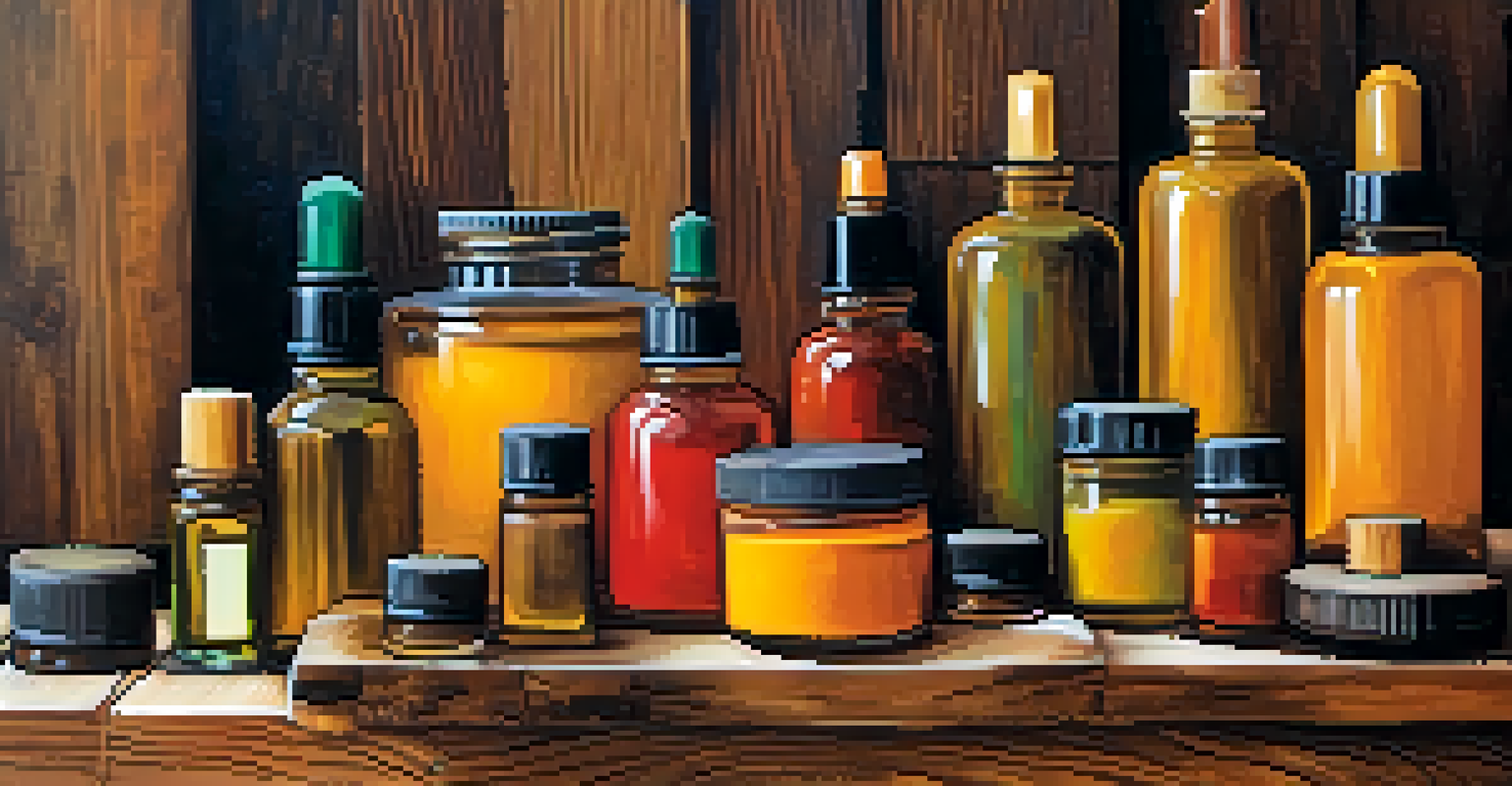Eco-Friendly Finishes: Protecting Carvings Sustainably

Understanding Eco-Friendly Finishes for Wood Carvings
Eco-friendly finishes are gaining popularity among artisans looking to protect their wood carvings without harming the environment. These finishes are typically made from natural materials or non-toxic substances, offering a safe alternative to traditional chemical-based products. By choosing eco-friendly options, artists not only safeguard their creations but also contribute to a healthier planet.
The earth does not belong to us: we belong to the earth.
From oils to waxes, there are various types of eco-friendly finishes available. For instance, natural oils like linseed or tung oil penetrate the wood, enhancing its natural beauty while providing a protective barrier. Additionally, plant-based waxes can offer a lovely sheen and further shield carvings from moisture and dirt without harmful effects.
Using eco-friendly finishes also aligns with a growing consumer demand for sustainable products. Many customers today are looking for items that are not only beautiful but also environmentally responsible. By adopting these finishes, creators can attract this conscious audience and build a reputation as a responsible artisan.
Benefits of Using Eco-Friendly Finishes
One of the primary benefits of eco-friendly finishes is their minimal impact on health. Unlike conventional finishes that may emit harmful fumes or contain toxic ingredients, eco-friendly options are generally safer for both the user and the environment. This is especially important for artists who work in enclosed spaces where proper ventilation may not be feasible.

Another advantage is the renewability of many eco-friendly materials. For instance, plant-based oils are derived from renewable sources, making them a sustainable choice in the long run. This not only reduces reliance on fossil fuels but also supports agricultural practices that can be more environmentally friendly.
Eco-Friendly Finishes Protect Art
Using eco-friendly finishes safeguards wood carvings while promoting environmental sustainability.
Moreover, eco-friendly finishes often enhance the wood's natural characteristics, allowing the unique grain patterns and colors to shine through. This can elevate the aesthetic appeal of carved pieces, making them even more attractive to potential buyers while maintaining their integrity.
Popular Eco-Friendly Finishes for Wood Carvings
When it comes to choosing an eco-friendly finish, there are several popular options to consider. One widely used finish is beeswax, which not only protects the wood but also gives it a warm, natural sheen. It’s easy to apply and can be reapplied regularly to maintain the finish over time.
Sustainability is no longer about doing less harm. It's about doing more good.
Another excellent choice is natural oils, such as linseed or tung oil. These oils penetrate the wood deeply, providing robust protection while enhancing the grain. They are particularly effective in preventing moisture damage, making them ideal for outdoor carvings or pieces exposed to varying humidity levels.
For those seeking a more durable finish, water-based polyurethane made from plant-derived materials is available. This type of finish provides a stronger protective layer while still being less harmful than traditional solvent-based polyurethanes. It’s a great option for artists looking for longevity without compromising on sustainability.
Application Techniques for Eco-Friendly Finishes
Applying eco-friendly finishes can be straightforward, but there are techniques that can enhance the final result. Start by ensuring that the wood surface is clean and sanded smoothly. This prep work allows the finish to adhere better, ensuring a more durable protective layer.
When applying oils, using a clean cloth or brush can help achieve an even application. It’s best to work in thin layers, allowing each coat to dry fully before adding another. This method not only helps with absorption but also prevents a sticky surface that can attract dust and debris.
Healthier Choices for Artists
Eco-friendly finishes minimize harmful fumes and toxic ingredients, ensuring a safer workspace for artisans.
For wax finishes, it’s beneficial to apply a small amount and work it into the wood with a soft cloth. Once the wax has dried, buffing can reveal a beautiful sheen while creating an additional layer of protection. This process enhances both the look and longevity of the carvings.
Maintaining Your Eco-Friendly Finish
Maintaining eco-friendly finishes is essential to ensure the longevity of your wood carvings. Regular cleaning with a damp cloth can help remove dust and dirt without damaging the finish. Avoid using harsh chemicals or abrasive materials, as they can strip the protective layer and harm the wood.
Depending on the type of finish used, reapplication may be necessary. For oils, a light coat every few months might be sufficient to keep the wood nourished and protected. Wax finishes may also require periodic reapplication to maintain their luster and protective qualities.
Observing the condition of your carvings regularly can guide you on when maintenance is needed. If you notice any signs of wear or dullness, it’s time to refresh the finish. This proactive approach will not only preserve the beauty of your carvings but also extend their lifespan significantly.
Eco-Friendly Finishes: A Sustainable Choice for Artisans
Choosing eco-friendly finishes is more than just a trend; it’s a commitment to sustainability and environmental responsibility. Artisans who prioritize these finishes are making a statement about the importance of protecting both their craft and the planet. This choice resonates with consumers who value sustainability, creating a positive impact on the market.
Furthermore, using eco-friendly finishes often encourages other artists to adopt similar practices. As more creators recognize the benefits and availability of sustainable options, a collective shift towards environmentally conscious crafting can occur. This ripple effect can lead to a broader movement within the art community.
Sustainable Materials Attract Buyers
Adopting eco-friendly finishes appeals to consumers seeking sustainable products, enhancing marketability.
Ultimately, selecting eco-friendly finishes is about creating beautiful, lasting pieces while respecting nature. It’s a path that not only enhances the quality of the work but also aligns with a vision for a sustainable future in the arts.
Conclusion: Embracing Eco-Friendly Practices in Art
Embracing eco-friendly finishes in your wood carving practice is a significant step towards creating a sustainable future. By understanding the options available and their benefits, you can make informed choices that protect your art and the environment. This commitment showcases your dedication to quality craftsmanship and ecological responsibility.
As consumers become increasingly aware of environmental issues, your choice of eco-friendly finishes can set you apart in a competitive marketplace. By promoting your use of sustainable materials, you not only attract like-minded customers but also contribute to a larger conversation about responsible consumption.

In the end, protecting your wood carvings with eco-friendly finishes is about more than just aesthetics; it’s about nurturing a relationship with the earth. By making this conscious choice, you’re not only preserving your art but also supporting a healthier planet for generations to come.